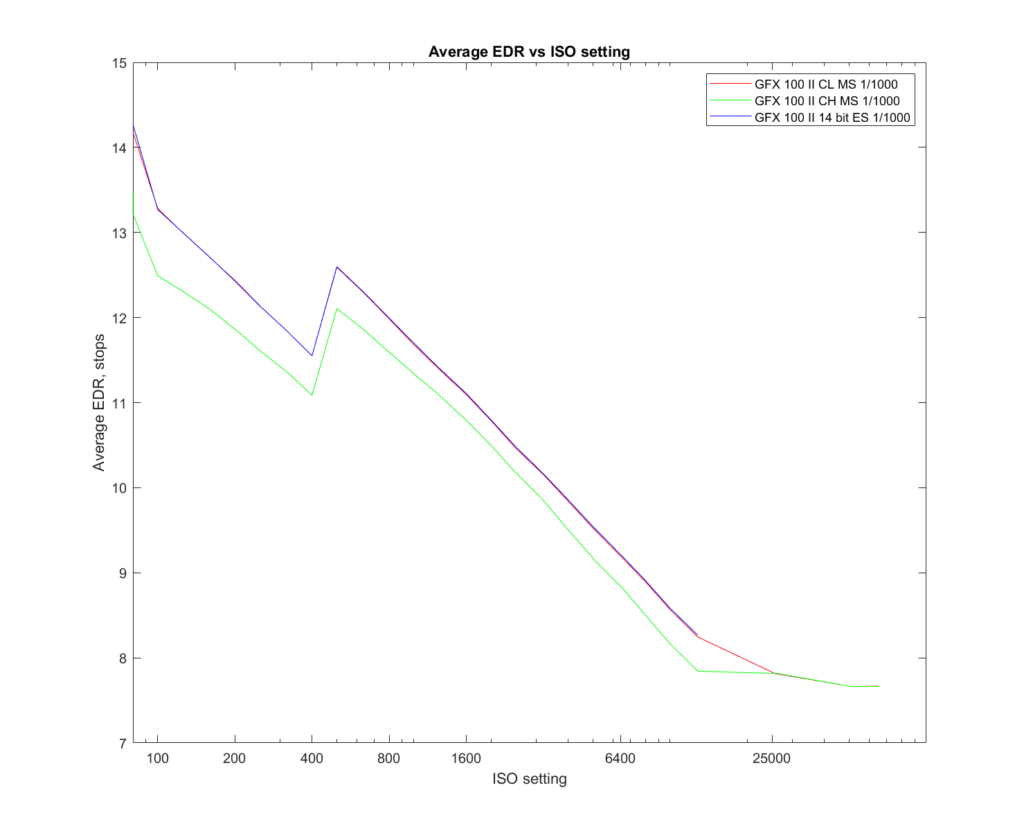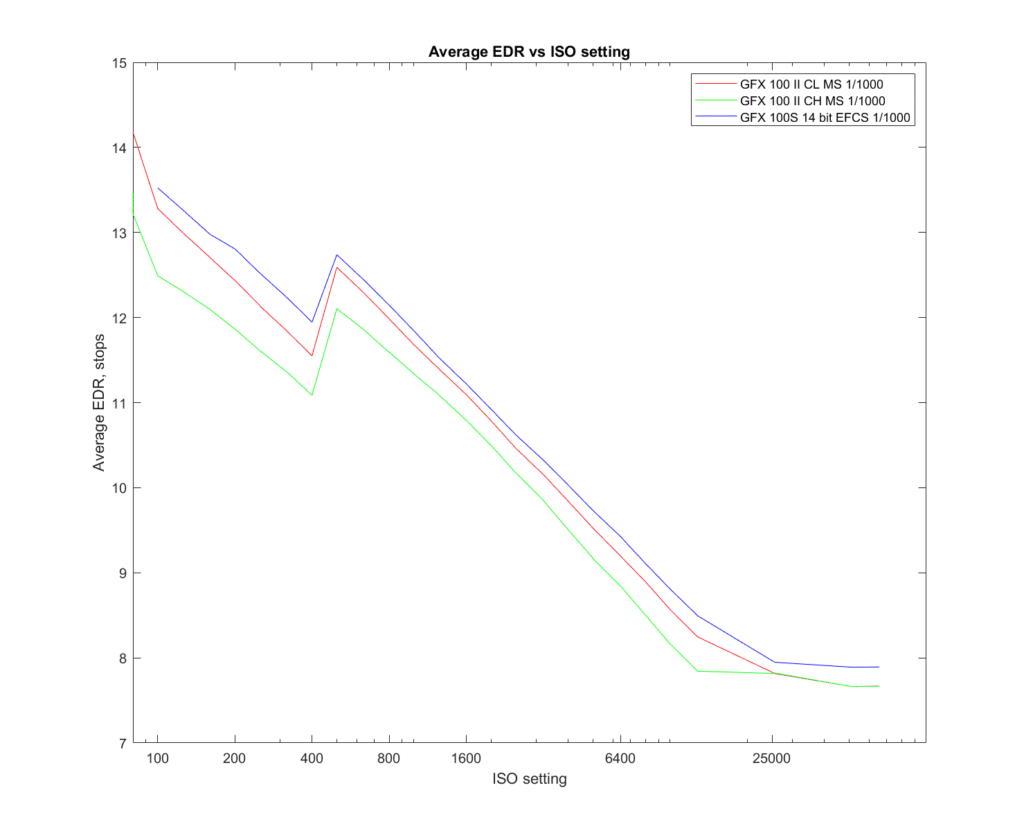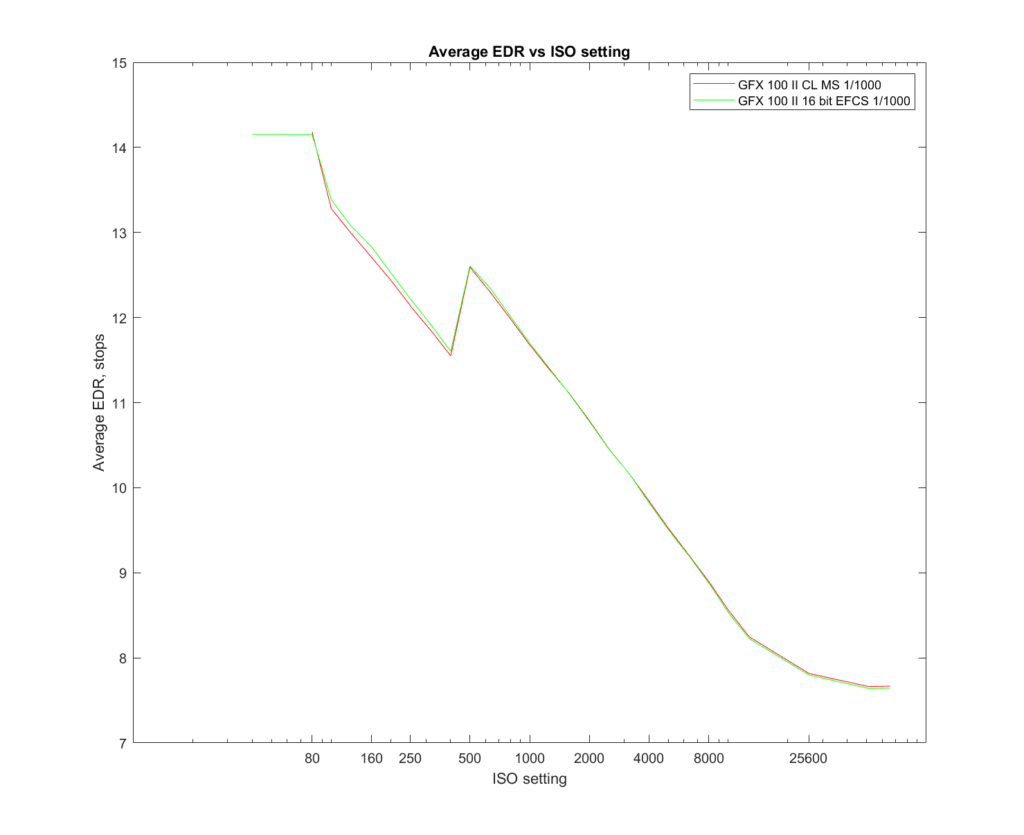This is the ninth post in a series of tests of the Fujifilm GFX 100, Mark II. You can find all the posts in this series by going to the Categories pane in the right hand panel and clicking on “GFX 100 II”.
Selecting continuous high (CH) drive mode reduces the EDR. Selecting continuous low does not.
The ISOs above about 12400 are affected by the camera’s internally applied filtering, even though all such filtering was supposedly turned off in the menus.
Except at ISO 80, the GFX 100 II has somewhat lower EDR than the GFX 100S.
Selecting 16 bit precision doesn’t help EDR.



Denz says
What use is the 16bit mode in terms of image quality?
JimK says
Good question. With the GFX 100S, there was hardly any IQ improvement. I’ll be testing the GFX 100 II for that.
Christian says
I did shoot some controlled studio sets to compare noise and dynamic range performance between 80 and 100 iso. in opposite to what your measurements suggest there is no substantial visible difference which is also reflected in the raw histogram, they are similar too. there is also no difference in micro detail. this is in line with an earlier test I did comparing the 100II to the 100s which also did not show an improved DR or noise performance at iso 80.